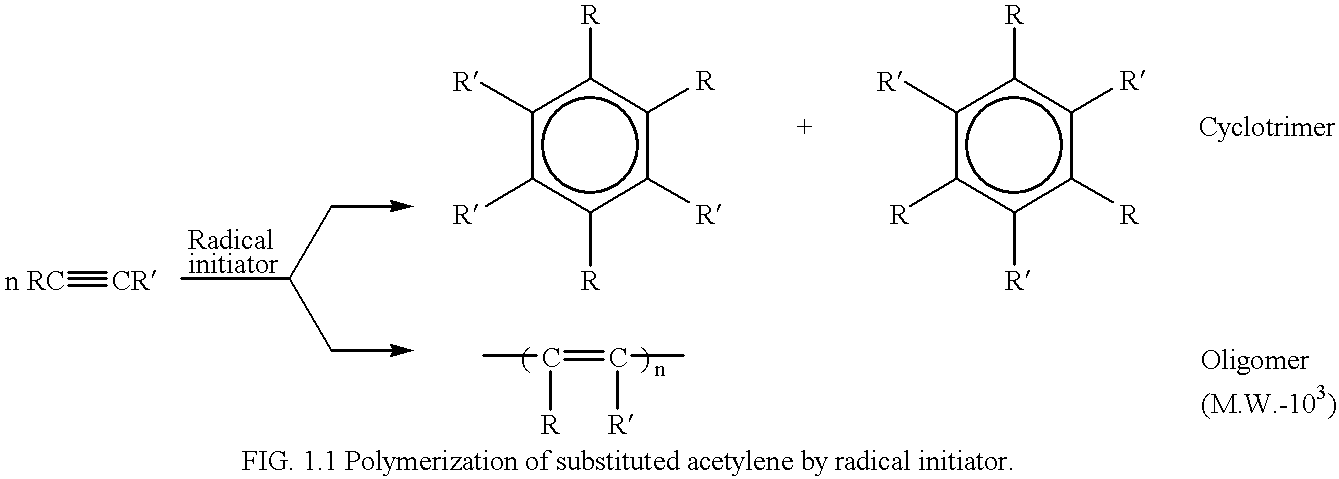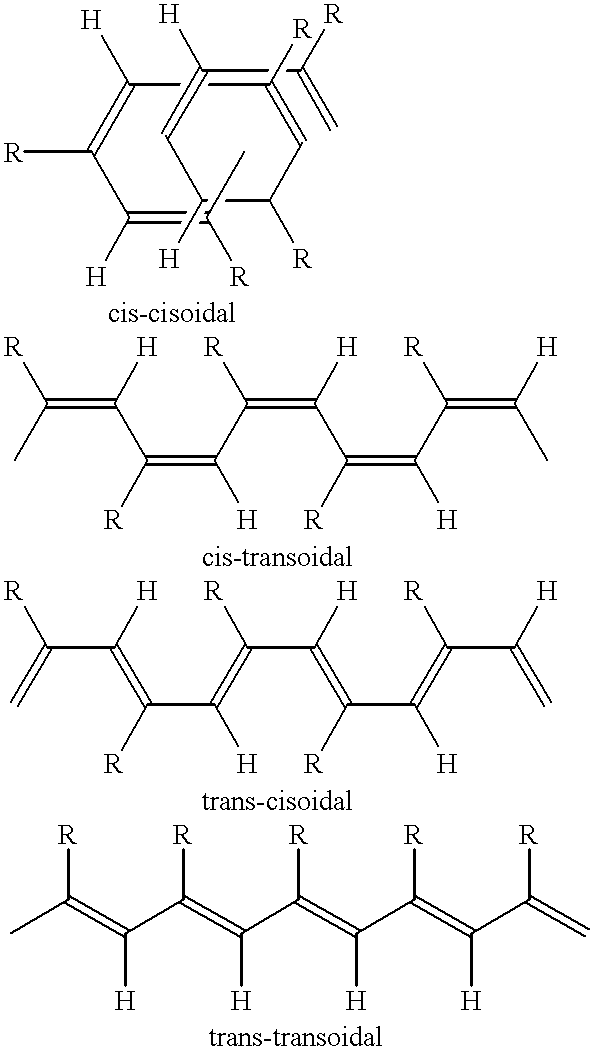Highly stereoregular polyacetylenes from organorhodium catalysts in aqueous media
a polyacetylene and high stereoregularity technology, applied in the field of high stereoregular polyacetylenes from organorhodium catalysts in aqueous media, can solve the problems of only applying the equation to the cis-transoidal ppa with high stereoregularity, and the selective synthesis of polymers having m.w.s higher than about ten thousand proved difficult, and achieves the effect of quick and easy preparation
- Summary
- Abstract
- Description
- Claims
- Application Information
AI Technical Summary
Benefits of technology
Problems solved by technology
Method used
Image
Examples
Embodiment Construction
A. Solvents
Dry diethyl ether, tetrahydrofuran, toluene were freshly distilled by standard method. Water was purified by simple distillation. AR grade solvents such as acetone, diethyl ether, tetrahydrofuran, ethanol, isopropanol, methylene chloride were used. Technical grade methanol was used to precipitate polymers.
B. Chromatographic Method
1. Thin-layer Chromatography
Analytical thin layer chromatography was conducted on silica gel 60 F.sub.254 precoated aluminium backed plates (0.2 mm thickness, 20.times.20 cm, Merck). TLC plates were visualized under ultra-violet light.
2. Adsorption Column Chromatography
Adsorption column chromatography was performed on columns of silica gel 60 (70-230 mesh, Merck) under normal gravity.
C. Purification of Monomers
All the monomers were distilled under nitrogen. The pure fraction of the distilled monomer was stored in small ampules and stored in refrigerator.
D. Determination of Physical Data
1. Gel-permeation Chromatography
All the molecular weight and ...
PUM
| Property | Measurement | Unit |
|---|---|---|
| Volume | aaaaa | aaaaa |
| Volume | aaaaa | aaaaa |
| Mass | aaaaa | aaaaa |
Abstract
Description
Claims
Application Information
 Login to View More
Login to View More - R&D
- Intellectual Property
- Life Sciences
- Materials
- Tech Scout
- Unparalleled Data Quality
- Higher Quality Content
- 60% Fewer Hallucinations
Browse by: Latest US Patents, China's latest patents, Technical Efficacy Thesaurus, Application Domain, Technology Topic, Popular Technical Reports.
© 2025 PatSnap. All rights reserved.Legal|Privacy policy|Modern Slavery Act Transparency Statement|Sitemap|About US| Contact US: help@patsnap.com



